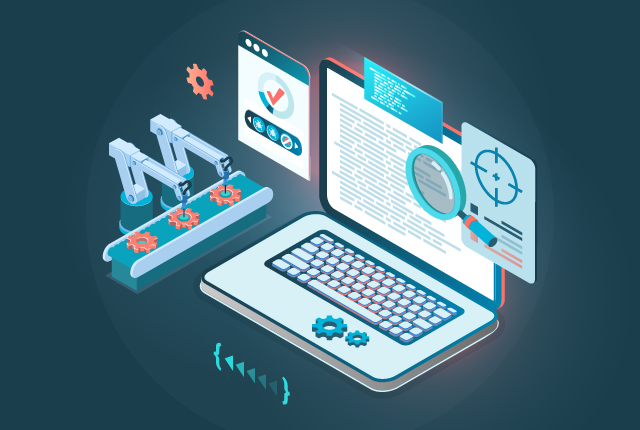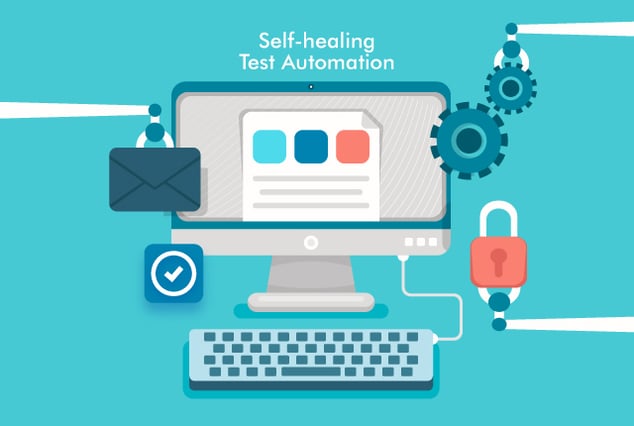
First, the answer. The best approach to test automation development has five steps:
-
Choose the right QA partner for test automation development
-
Identify project requirements and outline a strategy.
-
Identify the right tools for you
-
Build a framework and create scripts
-
Provide a demonstration and full reporting
If you are a manager balancing several budgets, you might have made a similar list. Some managers skip sourcing and vetting test automation development tools, which is a mistake. You will get better results with a well-considered strategy, including determining when test automation is best. The benefits of test automation include:
-
Better testing quality
-
More QA coverage
-
Faster releases
How you approach the development process determines how you leverage your automated application testing to reach those high-level goals. You must decide between running your QA process in-house or outsourcing it. Outsourcing automation QA development is always better when you round out your development team. Outsourcing is cheaper than investing in full-time employees and lets you scale—bringing you expertise when needed at release time. You can hire for specific timing and talent expertise without blowing out your core labor budget and tailor your expenditure to your market targets.
Ultimately, smart test automation development will save you time and money.
Choose the Right QA Partner for Test Automation Development
We are biased in this regard—though we are not alone in our thinking—but you should work with someone with a broad range of services that can accommodate your current and future goals. The longer you can stay viable for each other, the deeper and more efficient your partnership will become. At heart, you need a partner who believes you can still achieve the optimal agile development approach within an outsourced arrangement so you can maintain your key DevOps practices.
Identify Project Requirements and Outline a Strategy
Insert your favorite organizational truism here. Failing to prepare means preparing to fail or begin as you intend, but identifying your key development goals and parameters is crucial. Any good kickoff meeting will determine the project knowledge, product architecture, and methodology that will take you through the release cycle.
The Right QA Approach will Include Determining Priorities
What should and should not be automated—giving you the maximum bang for your buck? There is a natural budget temptation to limit your QA outsourcing team's participation in these initial meetings, but it would put you at a disadvantage. Involving your entire team through all stages of application development gives you greater coverage and makes your responses nimbler. You can communicate better when you learn the application language together.
With project requirements in hand, it is time to outline your strategy. This is where your QA automation team can shine. In this phase, you agree on creating test cases and the testing interface and generating and vetting all the necessary test data. This is where your product knowledge meets your outsourcing partner’s process expertise to create the quickest and most effective method of running your automation testing. Now that you have defined and prioritized the scope of your project to deliver maximum ROI, you can make the best choices in tool evaluation (open source or commercial) and projected staffing for your project.
Identify the Right Tools for You
Choosing the right tools foryour project can be crucial, as it can reduce your time and effort by focusing on the areas relevant to your project. Ensure your tools are easy to use and can handle many test cases. Some other factors to keep in mind are:
- Compatible with the technologies used in your application that are under test.
- It should support your need for parallel execution or CI/CD pipeline integration.
- It should help with the easy maintenance of test scripts.
- Consider the cost of the tool, like its licensing fees, and ensure that it aligns with your budget.
You should also consider using some AI tools that could reduce your workload by a significant amount. Some of the AI tools that can help with automation development are listed below:
- Functionize: Functionize is an AI-powered test automation tool that utilizes Natural Language Processing (NLP) to create end-to-end tests.
- Sauce Labs: Sauce Labs has AI capabilities that allow us to run automated tests across various devices, browsers, and operating systems.
- Mabl: Mabl has a powerful GUI that allows us to detect visual and functional discrepancies in our application. It can create end-to-end tests with self-healing capabilities.
- Applitools: Applitools is used for the application UI. It has multiple uses, ranging from software testing to monitoring and management. It can be used to test mobile, desktop, and web-based applications.
- Testim: Testim uses AI and Machine Learning algorithms to create test automation scripts. It is a good tool for the maintenance of scripts.
Build a Framework
After you have agreed on the strategy and the tools to be used, your QA team will build the necessary framework to automate the test cases. This is when you are most likely distant from a project element, which is why those first few decisions were so important. All these resulting scripts should be produced in batch format to reduce the chance of failure due to synchronization.
Framework building will involve deciding on the model of framework to be developed: Data-driven, page object model-based, or behavior-driven. It will also include building modularity into the framework and selecting standards for development, best practices, features, and functionality.
Demonstration and Reporting
This is where communication between you and your QA partner becomes crucial. You need constant, structured communication between onsite and offsite team members throughout this process to implement the correct training and documentation. That helps both sides implement tests in the future. And so, you roll through the QA process until your application reaches its target users.
That is the best approach to test automation development, and we are certain it will give you the optimal balance between cost-cutting and a high-quality end product. Automated testing will always save you time, but following these guidelines will save you money and maximize the potential of your team’s talent and vision. It is your app. Make sure it is produced the way you want.
If you agree that outsourcing is the best way to help your department stay agile, let QASource show you how easy this process can be. Reach out today for a Free Quote, or call +1.925.271.555.






